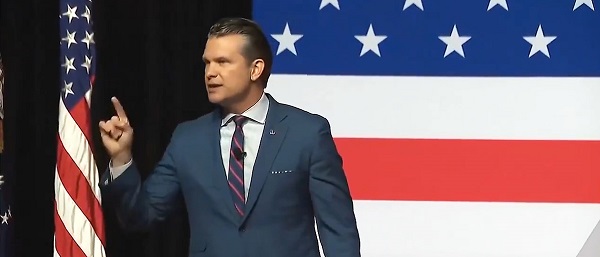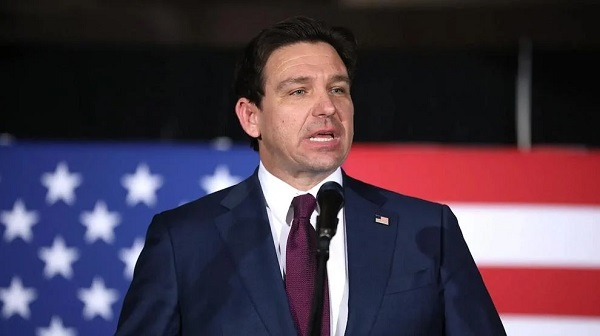Opinion
The city prefers housing, commercial buildings and gas bars on Piper Creek over a bridge, why?


On October 27 2020, 1 PM, there will be a public hearing at the Harvest Centre on the Westerner grounds because the city council wants to remove the Molly Banister extension so a developer can build even more houses along Piper Creek.
Currently the plan shows Molly Banister continuing across the creek then south to the power lines and west to 40 Ave. and 22 Street.

They state that this is a wildlife corridor, but just south of here is 19 Street with commercial development, office buildings, gas bar and parking lot, metres away from the creek. Southern point is just a culvert. The pollution alone from the parking lot, the potential oil and gas seeping into the ground then the creek.


Apparently this is all preferable than having a road, a sidewalk and a bridge.

There are 2 dozen homes that back onto Molly Banister that would see more traffic, This is minimal compared to the 300 families that back onto 32 St, that would see 6 lanes of traffic. 2007 the city decided not to expand 32 Street into 6 lanes because of Molly Banister taking some of the traffic. With Molly Banister off the table 32 Street gets expanded starting 2026. They are spending millions on the 32 St. bridge over Piper Creek. I emailed the city leaders asking if they are building it up for 6 lanes, and have yet to hear confirmation or denial.
There is talk that hikers, bikers and skaters would have to cross the Molly Banister bridge. You can build the bridge over the trail or you can have the trail exit the woods 40 m sooner and cross the road with a crosswalk signal. Right now there are thousands of people driving 4 kms further every day to travel around this subdivision. There is approximately 50 hectares to be built, the city wants 17 housing units per hectare which means 850 units. That would add to the current number. We are talking about millions of kilometres of extra driving every year, think about all those extra emissions pouring into our air.
September 2015, CBC reported we had the worst air quality in Alberta which had the worst air quality in Canada. This will only ensure it gets worse.
10,000 cars per day is the barrier for animals crossing a street. 32 St is now at 23,500 cars per day. 19 St will beat that. Animals are being kept in an area between 32 St. and 19 St. Which will be walled in, not by the current barbed wire fence but with housing, commercial buildings and parking lots.

The current trail runs along Barrett Drive on the west side of the creek in a grassy area away from the creek and inaccessible to the creek part of the way due to the barb wire fence.
Red Deer College was to see a second entrance on 22 Street easing the pressure off 32 St. Bower Mall and neighbouring businesses would have direct access to residents across the creek.
It is not like we need 850 more homes. The last census showed the city only grew by 195 residents in 5 years while added 1299 more housing units. Forcing the depreciation of our assessments last year.
The developments already built showed the tendency to remove trees and vegetation along the creek.
So my question remains. Why is a well thought out traffic corridor with a bridge and a road, that has been the basis for commercial and residential development, worse than having housing and commercial buildings encroaching on our creek?
The public hearing is 1 pm on October 27 at the Harvest Centre on the Westerner grounds, Please speak up.
Daily Caller
Hegseth Planning Huge Shakeup Of Top Military Command: REPORT


From the Daily Caller News Foundation
War Secretary Pete Hegseth is moving forward with a massive shakeup of military leadership, restructuring top commands and moving the U.S. focus away from Europe and the Middle East, according to a report out Monday.
Five sources with knowledge of the matter told The Washington Post the Pentagon is set to consolidate U.S. Central Command in the Middle East, U.S. European Command and U.S. Africa Command into a new larger combatant command, the U.S. International Command. Other commands would be similarly consolidated, reducing the total number of combatant commands from 11 to eight. The intended restructuring is designed both to reduce the number of admirals and four star generals and refocus the U.S. military on the Indo-Pacific and Western Hemisphere, according to the sources.
The plan would be one of the most significant changes to the military’s upper echelons in decades, and the move would bring the Pentagon more directly in line with the administration’s refocusing of priorities in the recently released National Security Strategy.
Dear Readers:
As a nonprofit, we are dependent on the generosity of our readers.
Please consider making a small donation of any amount here.
Thank you!
“As a matter of Department of War policy, we will not comment on leaked documents that we cannot authenticate and rumored internal discussions, as well as specifics of architectural discussion or pre-decisional matters,” a War Department official told the Daily Caller News Foundation. “Beyond this, any insinuation there is a divide within the Department is completely false – everyone in the Department is working to achieve the same goal under this administration.”
The Post also reports the proposal was crafted under supervision by Chairman of the Joint Chiefs of Staff Gen. Dan Caine, at Hegseth’s request. Caine will also be sharing two alternate proposals on potential restructures.
Hegseth has been looking for ways to reduce the number of four star generals in the Armed Forces, which has roughly the same amount of generals now as during World War II.
Daily Caller
Paris Climate Deal Now Decade-Old Disaster


From the Daily Caller News Foundation
By Steve Milloy
The Paris Climate Accord was adopted 10 years ago this week. It’s been a decade of disaster that President Donald Trump is rightly trying again to end.
The stated purpose of the agreement was for countries to voluntarily cut emissions to avoid the average global temperature exceeding the (guessed at) pre-industrial temperature by 3.6°F (2°C) and preferably 2.7°F (1.5°C).
Since December 2015, the world spent an estimated $10 trillion trying to achieve the Paris goals. What has been accomplished? Instead of reducing global emissions, they have increased about 12 percent. While the increase in emissions is actually a good thing for the environment and humanity, spending $10 trillion in a failed effort to cut emissions just underscores the agreement’s waste, fraud and abuse.
As a nonprofit, we are dependent on the generosity of our readers.
Please consider making a small donation of any amount here.
Thank you!
But wasting $10 trillion is only the tip of the iceberg.
The effort to cut emissions was largely based on forcing industrial countries to replace their tried-and-true fossil fuel-based energy systems with not-ready-for-prime-time wind, solar and battery-based systems. This forced transition has driven up energy costs and made energy systems less reliable. The result of that has been economy-crippling deindustrialization in former powerhouses of Germany and Britain.
And it gets worse.
European nations imagined they could reduce their carbon footprint by outsourcing their coal and natural gas needs to Russia. That outsourcing enriched Russia and made the European economy dependent on Russia for energy. That vulnerability, in turn, and a weak President Joe Biden encouraged Vladimir Putin to invade Ukraine.
The result of that has been more than one million killed and wounded, the mass destruction of Ukraine worth more than $500 billion so far and the inestimable cost of global destabilization. Europe will have to spend hundreds of billions more on defense, and U.S. taxpayers have been forced to spend hundreds of billions on arms for Ukraine. Putin has even raised the specter of using nuclear weapons.
President Barack Obama unconstitutionally tried to impose the Paris agreement on the U.S. as an Executive agreement rather than a treaty ratified by the U.S. Senate. Although Trump terminated the Executive agreement during his first administration, President Joe Biden rejoined the agreement soon after taking office, pledging to double Obama’s emissions cuts pledge to 50 percent below 2005 levels by 2030.
Biden’s emissions pledge was an impetus for the 2022 Inflation Reduction Act that allocated $1.2 trillion in spending for what Trump labeled as the Green New Scam. Although Trump’s One Big Beautiful Bill Act reduced that spending by about $500 billion and he is trying to reduce it further through Executive action, much of that money was used in an effort to buy the 2024 election for Democrats. The rest has been and will be used to wreck our electricity grid with dangerous, national security-compromising wind, solar and battery equipment from Communists China.
Then there’s this. At the Paris climate conference in 2015, U.S. Secretary of State John Kerry stated quite clearly that emissions cuts by the U.S. and other industrial countries were meaningless and would accomplish nothing since the developing world’s emissions would be increasing.
Finally, there is the climate realism aspect to all this. After the Paris agreement was signed and despite the increase in emissions, the average global temperature declined during the years from 2016 to 2022, per NOAA data.
The super El Nino experienced during 2023-2024 caused a temporary temperature spike. La Nina conditions have now returned the average global temperature to below the 2015-2016 level, per NASA satellite data. The overarching point is that any “global warming” that occurred over the past 40 years is actually associated with the natural El Nino-La Nina cycle, not emissions.
The Paris agreement has been all pain and no gain. Moreover, there was never any need for the agreement in the first place. A big thanks to President Trump for pulling us out again.
Steve Milloy is a biostatistician and lawyer. He posts on X at @JunkScience.
-

 Great Reset2 days ago
Great Reset2 days agoViral TikTok video shows 7-year-old cuddling great-grandfather before he’s euthanized
-

 Daily Caller1 day ago
Daily Caller1 day agoChinese Billionaire Tried To Build US-Born Baby Empire As Overseas Elites Turn To American Surrogates
-

 Alberta2 days ago
Alberta2 days agoSchools should go back to basics to mitigate effects of AI
-

 International2 days ago
International2 days agoAt Least 15 Killed In Shooting Targeting Jewish Community At Australia’s Bondi Beach, Police Say
-

 Business1 day ago
Business1 day agoMajor tax changes in 2026: Report
-

 International1 day ago
International1 day agoTwo states designate Muslim group as terrorist
-

 Digital ID1 day ago
Digital ID1 day agoCanada releases new digital ID app for personal documents despite privacy concerns
-

 Censorship Industrial Complex1 day ago
Censorship Industrial Complex1 day agoDeath by a thousand clicks – government censorship of Canada’s internet






